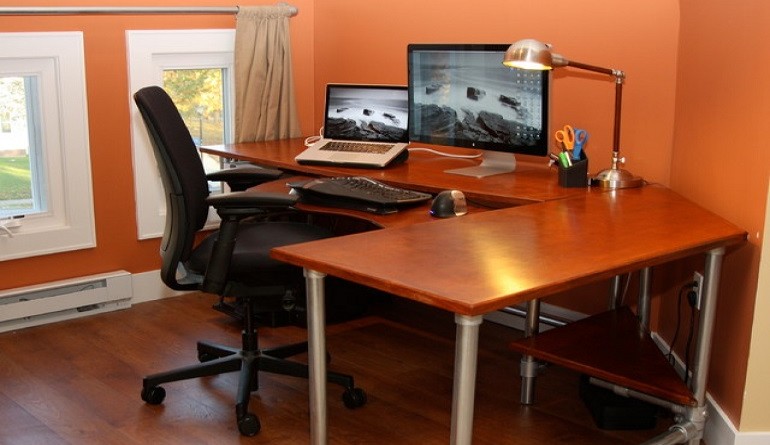Office Ergonomics: How to Properly Set Up Your Computer Workstation
Most people think that having a desk job implies that you are not at risk of a workplace injury, but in reality, this unfortunately is not the case. The truth is, the stress and sedentary nature of office jobs can wreak havoc with your mental and physical health. There are many aspects of the workplace that can be the cause of repetitive strain injury, neck and back pain, and even increase the risk of diabetes, cardiovascular conditions, cancer, and a multitude of other health problems.
Some risk factors are very obvious, like for instance an unsuitable chair, and some can go unnoticed until you start feeling their effects. One of those hidden workplace risks is the bad computer setup. An improperly set up workstation can cause you to slouch over, the mouse and keyboard can put tension on your wrists, and a bad PC screen can damage your eyesight. If you feel these and similar effects, perhaps it’s time to improve the comfort of your workspace with an ergonomic computer setup.
For an ergonomic computer setup, the keyboard and mouse need to be as close together as possible to reduce the tension on the dominant hand moving back and forth. This is why most ergonomic keyboards omit the numeric part, and only come in alphanumeric form. Ideally, the letter B should be positioned directly in front of you. If there’s a task that only involves working with numbers, there are also completely separate numeric keyboards that you can use.
A regular computer mouse is small and designed to fit in your palm in a horizontal position with the wrist resting on the desk. This position causes an abnormal amount of tension on the palm, wrist, arm and shoulder. With long term, repetitive use, the standard computer mouse can cause wrist pain and even carpal tunnel syndrome and tendonitis. Ergonomic computer mouses on the other hand, have a vertical design which allows you to keep your wrist, arm and palm in a natural tilt, preventing tension and pain.
When it comes to computer monitors, most of them are super adjustable on their own. The ideal monitor height should be parallel to your eyes, so that you won’t need to tilt your head up or down and cause strain on your neck. If your monitor is not height-adjustable you can make your own DIY monitor stand with the help of some books or boxes. Also, make sure that it is at a comfortable distance as to not emit too much glare. If the text is too small for you to read it, it’s better for you to zoom it in than to bring the monitor closer. Most importantly, make sure to use a screen with a sharp quality, with an anti-glare filter, or an LCD display.

